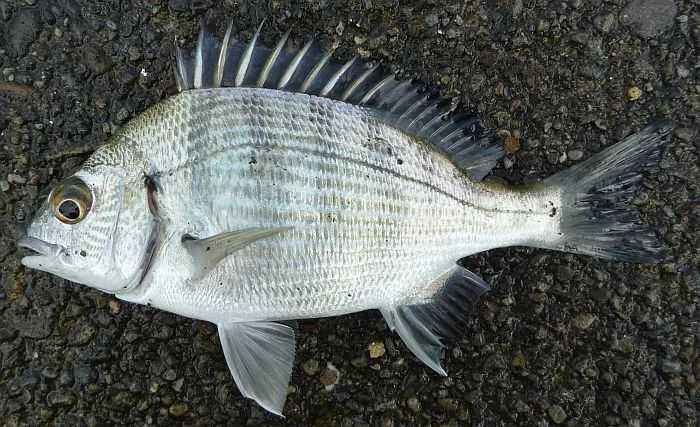
Acanthopagrus schlegelii, commonly known as the black sea bream, is a highly regarded marine fish belonging to the Sparidae family, inhabiting the temperate and subtropical waters of the northwestern Pacific Ocean. Celebrated for its striking appearance and culinary excellence, this species is a cornerstone of both commercial fisheries and recreational angling in regions such as Japan, Korea, and China’s Yellow and East China Seas.
Characterized by a robust, laterally compressed body, the black sea bream grows up to 60 centimeters in length, with a deep, silvery-gray to dark brown dorsal surface that fades to a lighter shade on its ventral side. Its most distinctive feature is the prominent black spines on its dorsal fin, which give the species its name and serve as a powerful defense against predators. The fins often exhibit subtle yellow or orange edges, adding to its visual appeal. Juveniles typically display vertical black bars on their flanks, which fade as they mature, while adults develop a sleek, uniform coloration that helps them blend into rocky and sandy seabeds.
In its natural habitat, Acanthopagrus schlegelii frequents coastal areas, including rocky reefs, estuaries, and the vicinity of jetties and piers, where it feeds on a varied diet of crustaceans, mollusks, and small fish. Its strong jaws and molar-like teeth are adapted for crushing the shells of its prey, making it an efficient benthic predator. This species is known for its territorial behavior, often forming small groups or solitary territories during the day and retreating to deeper waters at night. During the breeding season, which typically occurs in late autumn, females release their eggs into the water column, where they are fertilized by males before drifting with ocean currents.
Highly prized for its firm, flavorful flesh, the black sea bream is a staple in seafood markets and restaurants, often prepared steamed or grilled. Its popularity has led to intensive commercial fishing and aquaculture, with hatchery-reared individuals supplementing wild populations. However, overfishing in some areas and habitat degradation from coastal development pose significant threats to its sustainability. Conservation efforts, including the establishment of marine protected areas and the promotion of responsible aquaculture practices, are crucial to maintain healthy populations. As a symbol of coastal marine productivity and a key species in local economies, Acanthopagrus schlegelii highlights the delicate balance between human utilization and the preservation of marine ecosystems.





